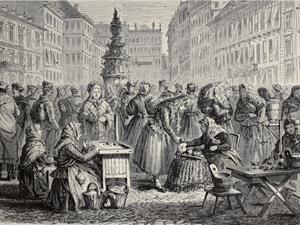
PUMPA - SMART LEARNING
எங்கள் ஆசிரியர்களுடன் 1-ஆன்-1 ஆலோசனை நேரத்தைப் பெறுங்கள். டாப்பர் ஆவதற்கு நாங்கள் பயிற்சி அளிப்போம்
Book Free DemoThe Vijayanagar Administration:
The administration of Vijayanagar followed a model of Proper hierarchy where the position of king was hereditary primarily but was also seen as flexible at that time as the king allowed peaceful transmission of power to his successor.
Due to the warring threats from the Bahmani Kingdom, the Vijayanagar built a strong and reputed army to ward them off.
The empire had a strong army empowered with Cavalry and armed persons with horses and enhanced artillery, which was not seen among the contemporaries of the Vijayanagar Kingdom.
Nayaks: They are military officers appointed by the ruler to maintain the conquered territories of Vijayanagar. They also maintained the provinces under the King’s order.
The Mandalam is the largest of the administrative units headed by “Mandleshwar”, and the Villages are at the bottom of the administrative setup, which had Gram Sabha headed by “Gauda”.
The rulers gave complete autonomy to the local bodies as they didn’t interfere in their affairs.
The Economy of Vijayanagar:
The Vijayanagar economy was highly dependent on the land tax accrued from the lands of the empire. Lands were surveyed and taxed according to their fertility. This land tax was partly used to develop dams and Canals and partly spent for the Military.
Cultural developments:
Three provinces of Tamil Nadu, which were under the control of Nayaks, namely the Thanjavur, Senji and Madurai, had their allegiance towards the Vijayanagar empire.
The period of their nexus witnessed greater patronage in the fields of art and architecture. They also developed numerous Hindu texts during this period.
The Mughal administration:
The administration of the Mughal empire began with a proper rule under Akbar. As his predecessors were highly engaged in wars and conquests, they couldn’t devise a structure for administration.
As his predecessors were highly engaged in wars and conquests, they couldn’t devise a structure for administration.
Todar Mal: He was the minister of Akbar’s court under whose guidance Akbar experimented on the land revenue system. It was also later named as “Sabti system or Bandobast system or the Todar mal system”.
Akbar divided the land under his rule into Provinces for efficient administration. The provinces are called “Subas” which were kept under the control of “Subedars” who did both military and political activities of the provinces.
Akbar maintained a huge army with ranking systems and followed the policy of religious tolerance and matrimonial alliances. His Western adversary Rajputs was brought under the Mughal suzerainty.
The Mughals under Aurangzeb:
The last great ruler of the Mughal empire, Aurangzeb, was a diametrically opposite figure of Akbar who propounded the policy of religious intolerance. These policies earned him more enemies, and the dynasties which had a cordial relationship with the empire reversed their stand
The Europeans and the change in Paradigm Shift:
The arrival of Europeans as traders marked a new chapter in the history of India. They exported goods like raw Silk, Cotton and other species, which had a huge market in Europe.

Ancient European Market
This development led to the greater expansion of textile mills in India. The Europeans, in return, introduced new commercial plantations which suited the Indian soils. The concept of “Commercialisation of Agriculture” began after the advent of the Europeans.